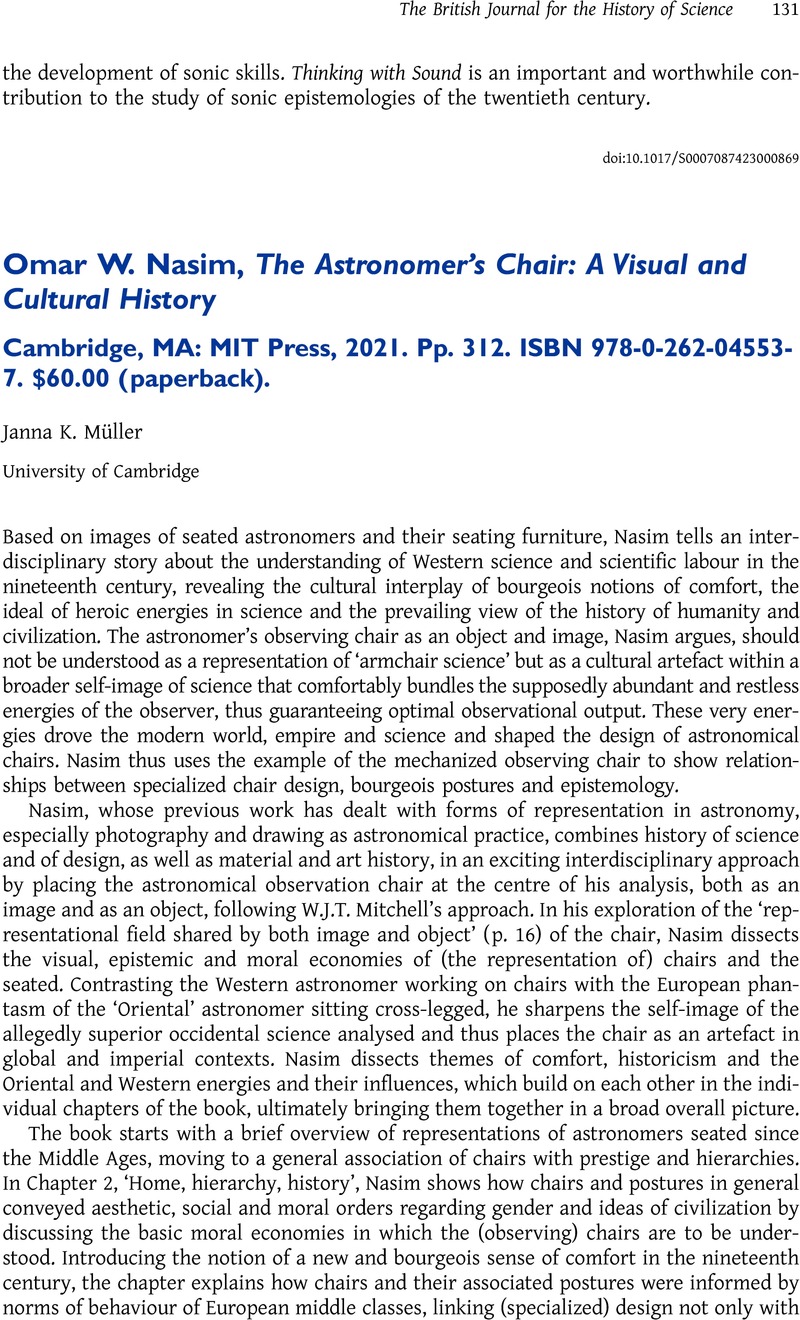No CrossRef data available.
Article contents
Omar W. Nasim, The Astronomer's Chair: A Visual and Cultural History Cambridge, MA: MIT Press, 2021. Pp. 312. ISBN 978-0-262-04553-7. $60.00 (paperback).
Review products
Omar W. Nasim, The Astronomer's Chair: A Visual and Cultural History Cambridge, MA: MIT Press, 2021. Pp. 312. ISBN 978-0-262-04553-7. $60.00 (paperback).
Published online by Cambridge University Press: 05 January 2024
Abstract
An abstract is not available for this content so a preview has been provided. Please use the Get access link above for information on how to access this content.

Information
- Type
- Book Review
- Information
- Copyright
- Copyright © The Author(s), 2024. Published by Cambridge University Press on behalf of British Society for the History of Science


